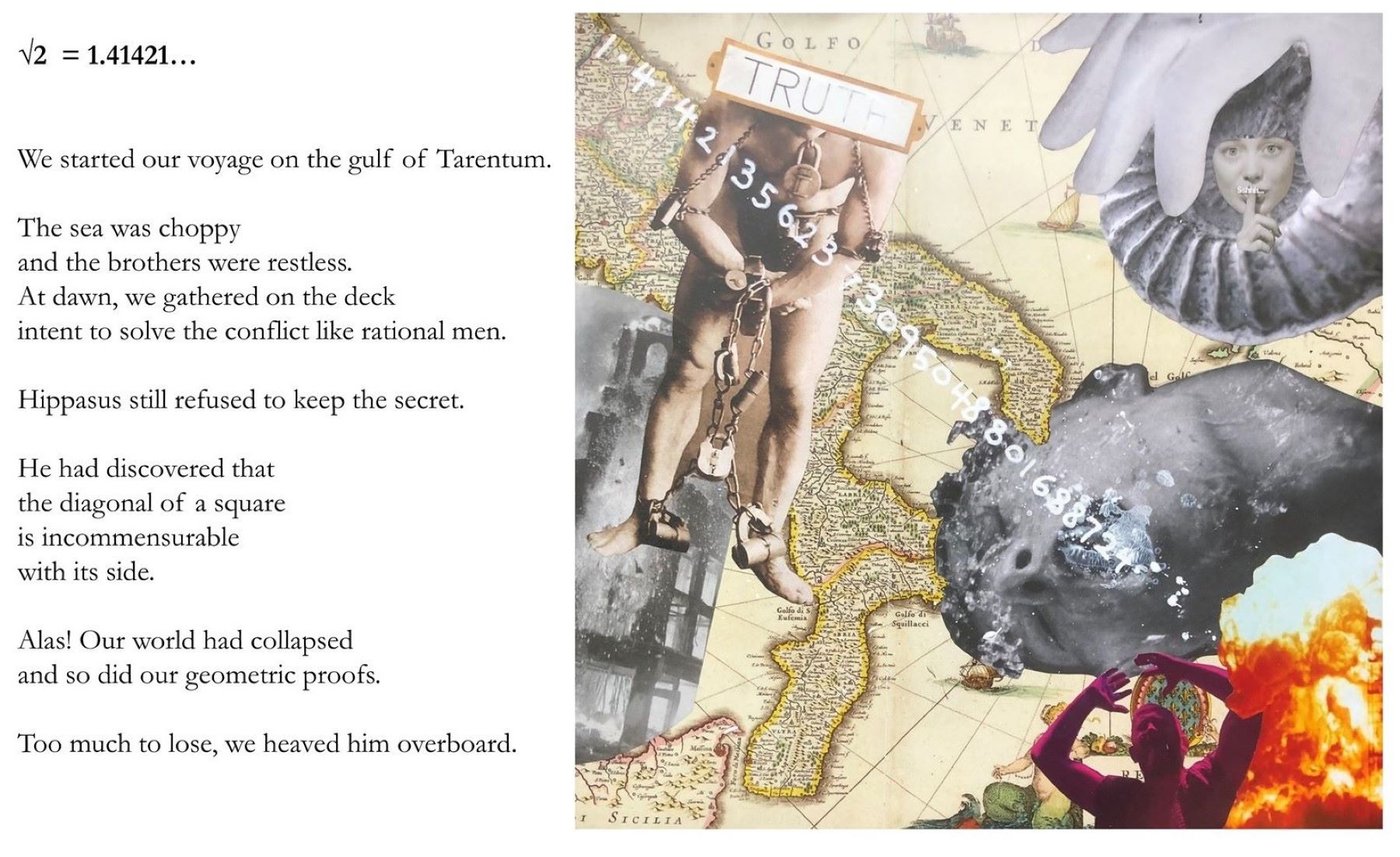A Poem - Collage Project
Poem by Sarah Glaz with Collage by Mark Sanders
The poem-collage pair appears in the Bridges 2021 online art gallery: https://gallery.bridgesmathart.org/exhibitions/2021-bridges-conference/sarahglaz
 |
 |
History, Mathematics, Poem, Collage
In the 5th century
BCE, Hippasus of Metapontum discovered the existence of
irrational numbers. Metapontum was a Greek city located on the
gulf of Tarentum. It was part of Magna Graecia, the
coastal area of southern Italy colonized by Greece, which also
included the city of Crotona, where Pythagoras (580 - 500 BCE)
settled after he left his native island of Samos. In Crotona,
Pythagoras established the secret philosophical society known
as the Pythagorean Brotherhood. Hippasus was a member of
Pythagorean Brotherhood. The society followed strict rules of
conduct and a common lifestyle and philosophy.
A fundamental belief of the
Pythagorean Brotherhood was that whole numbers underlie all
natural phenomena. Whether in music, or astronomy, or
philosophy, the central position of "number" was everywhere
evident. This belief led them to undertake investigations into
the properties of numbers and to the discovery of many
interesting mathematical results. Greek mathematics
contributed to the discipline its most fundamental principle
-- the requirement that mathematical results are validated by
proofs. The Pythagoreans were among the first to prove many
mathematical truths that were in common usage in the ancient
world, like for example, the so-called Pythagoras Theorem.
They also discovered and proved numerous new results in
geometry and Number Theory. Many
of their discoveries were kept secret and when shared with
outsiders, they were presented as a common accomplishment of
the entire brotherhood.
Hippasus discovered that
square root of 2
The crisis of
incommensurable quantities, as the discovery of the
irrational numbers came to be called, increased with the
realization that Pythagoras Theorem yields an unlimited number
of irrational numbers. It fell to Eudoxus of Cnidos (408 - 355
BCE) to resolve the crisis by introducing a theory of
proportion that corrected all the invalid proofs. In the end,
the discovery of the irrational numbers turned out to be one
of the greatest contributions the Pythagoreans made to
mathematics.
The poem "Square root of 2"
plays with the imaginary possibility that Hippasus' murder
occurred before he made his discovery public. How did the
future find out about the irrational numbers and their
history? To
answer this, use the power of your imagination. The poem's
stanza line count follows the decimal expansion of square root
of 2
The collage "Square root of 2" is a square with a diagonal
labeled by the decimal expansion of square root of 2
